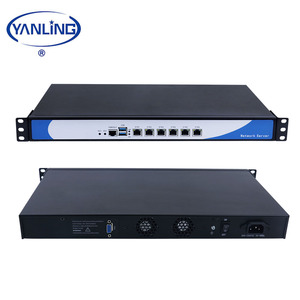
All categories
Featured selections
Trade Assurance
Buyer Central
Help Center
Get the app
Become a supplier

(16 products available)




















































Global digital satellite systems that offer pay-TV through access control through a smart card are made possible by the card sharing server client. It strives to make this access more affordable for its users by removing the requirement for individual subscriptions to each television provider.
These systems divide the card between several clients, allowing them to access television channels and other content that would otherwise require a subscription. Such systems are commonly referred to as"" card sharing"". To facilitate this sharing of access control, a reliable server and client configuration are needed.
A diverse clientele, ranging from casual viewers to broadcasters and hospitality businesses, is served by these card-sharing servers. To provide resilience, uptime, and adaptability to changing channel requirements and the regulatory landscape, they provide different packages and features. Ensuring compliance with legal and regulatory standards while providing a seamless viewing experience is achieved by understanding the target audience's needs and navigating the intricate realm of card-sharing servers.
The different types of card-sharing server clients are:
A card-sharing server works by taking one signal from a satellite and splitting it to make multiple signals. All the different signals have to be redirected to satellite receivers so that people can view the channels they want. This allows access to many channels with just one subscription. These are some common features of card-sharing servers:
Control Panel for Management
A control panel is a way for card-sharing servers to manage users, cards, and receivers. It has many functions, such as adding or subtracting users, monitoring service uptime, and managing channel lists, to name a few. Another important feature of a control panel is that it provides regular logs and reports to help one analyze and troubleshoot issues.
Multiple Protocols
Different digital TV receivers use different communication methods to get signal-sharing servers. A good server should support many methods, like CCcam, Newcamd, and Oscam, so that it can work with various receivers. This flexibility ensures there won't be compatibility issues.
Stable And High-Quality Streaming
For card-sharing servers to work properly, they need to provide uninterrupted smooth streaming. This is because many users depend on the server to access their digital TV channels. High-quality streaming also ensures that there are no issues with pixelation or buffering. For this to be achieved, the server needs to have stable internet connectivity and a good quality dedicated server.
Multi-device Support
A good card-sharing server should support many devices, such as set-top boxes, smart TVs, tablets, phones, and PCs. This allows different users in the same household to enjoy simultaneous access to their digital TV channels without conflicting.
Customizable Channel Configuration
This feature allows users to personalize their viewing experience by choosing different channel configurations based on preferences and needs. Such flexibility ensures that every user has access to their favorite channels.
Enhanced Security
For sharing servers to work properly without any hacks or disruptions, security has to be a top priority. Certain measures have to be put in place to enhance security, such as encrypted communication, secure servers, and regular software updates. Taking security precautions allows for worry-free card sharing.
The card sharing server client application is useful in various scenarios. These include the following:
When choosing a card server, operators must ensure it meets all their needs. There are several important factors to consider when selecting a sharing server:
Q: What is card sharing?
A: In simplified terms, card sharing is the process of sharing a decrypted digital signal among multiple users via a local network (intranet) or the internet. This is possible with satellite and cable broadcasting systems. Several systems employ computers with a smart card reader to retrieve and distribute the signal digitally.
Q: What are the different types of card sharing?
A: Different types of card sharing servers are available, but they all work on the same basic principle — one card is in the reader, and multiple clients receive the signal digitally through a network.
Q: Is card sharing illegal?
A: It is important to note that in some countries, card sharing is expressly forbidden by law. Sometimes, the decoder's manufacturer or the service provider may impose restrictions on using the smart card, making card sharing illegal even though it is not expressly forbidden by law. Failure to comply with these terms can result in legal action against the user.